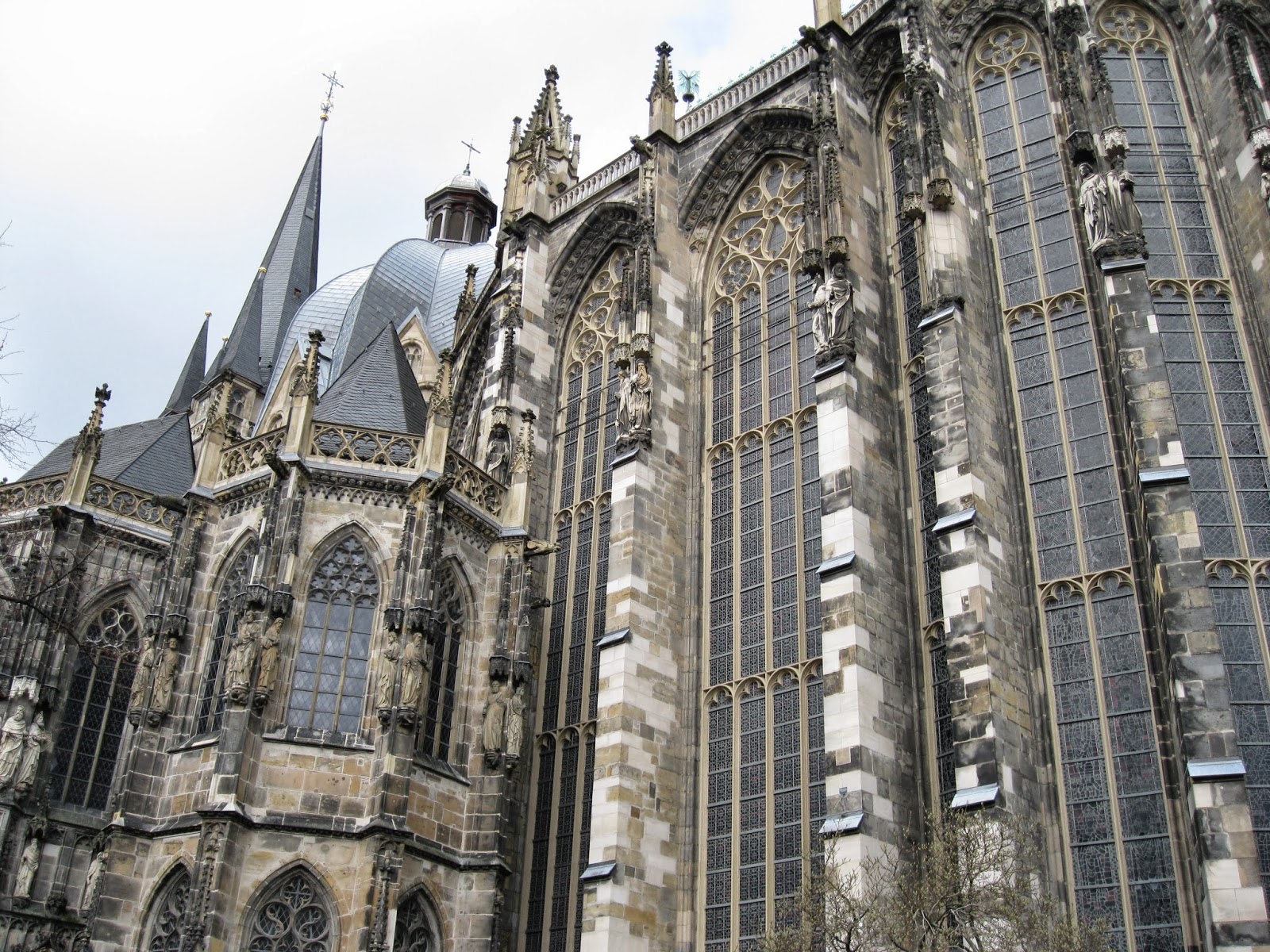Side view of the Cologne Cathedral. Here one can
clearly view the flying buttresses that surround the church.
The famous twin spires of the Cologne Cathedral.
Notice all the triangular shapes and pointed arches.
From this perspective one can get a feeling of the
enormous size of the Cathedral.
We spent about two hours in Cologne and then immediately proceeded by train to visit the German city of Aachen. After settling into our hotel in Aachen, we went out for lunch at a Spanish style restaurant and chatted with Ken Mattice and Emily Newton. The two are both accomplished singers and work in Europe. Interestingly, Emily is a UNCSA alumni and would later that day sing the lead role in Beethoven's opera, "Fidelio".After lunch we took a tour inside the Aachen Cathedral. The Cathedral was a true feast for the eyes as it showcased golden paintings, stained glass windows, and about three or four organs. It is said that this Cathedral is the oldest in Northern Europe. In 796 Charlemagne had ordered the construction of the Palatine Chapel, which is now part of the Aachen Cathedral.
Exterior of the Aachen Cathedral.
Stained glass windows inside the Aachen Cathedral.
One of the organs inside the Aachen Cathedral
along with the stained glass windows.
One of the gold painted ceilings inside the Cathedral.
Another one of the organs in the Aachen Cathedral.
Notice the television screen on the left side of the console.
I speculate that it must be used to watch the service
since this organ is very far away from the altar.
Shortly after our tour, we set out to have dinner with Stephan Boving, who is a tenor at the Comic Opera Berlin, and Stefan Ruetter, who is a faculty member at the Cologne School of Music. It was an enjoyable time speaking with them and they gave us a good idea of the music scene in Europe. Once dinner was over, we went to see the production of Beethoven's "Fidelio" with Emily Newton, of whom we had met earlier, singing the lead role. The production had a modern take to it. Gone were the authentic dresses and clothes of Beethoven's time and were replaced by mid-20th century clothing. The setting was also modernized, focusing around the office environment. Special effects were used in between arias such as echoing voices in the speakers surrounding the audience. Because of this unique take on "Fidelio" there were mixed opinions from the members in our group. Some didn't mind the production and focused more on the music, which was phenomenal by the way (Emily Newton was a star!). Others such as myself thought that the production was a bit too odd and took away from the quality of the music. Later that night our group met up with Ken, Emily, Stephan, and Stefan a second time and spoke about the performance. All and all we enjoyed these guests very much and the time we spent with them made it a great way to end our trip.















